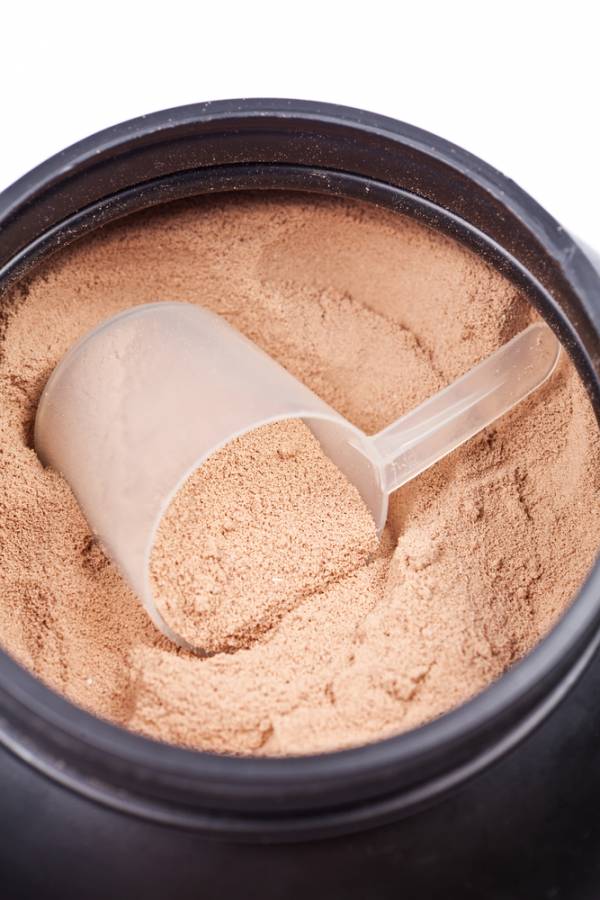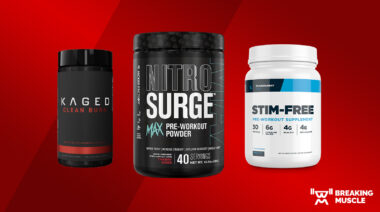With so many food and supplement companies making so many different health claims, have you ever wanted your own personal shopping expert to explain what all the label claims and ingredients actually mean? As a CEO of a supplement company myself, I consider myself an expert in this realm, and I’m here to help share with you the importance of understanding a few of the label claims you see on supplement products (though, sadly, I can’t offer to walk you down the food aisles – that would be creepy).
So here are the three steps I would take in evaluating a product:
Step 1: Check the Ingredients
The most important thing to understand is that companies have a lot of room to make vague claims on the front of the label. For example, the claim of “23g protein in every serving” doesn’t detail the information that really matters, namely the type of protein in the product. You won’t find that until you perform some Sherlock Holmes-esque detective work on the ingredient panel. There, you’ll find out if the protein is coming from high-quality whey isolate or perhaps (found in most protein bars) it’s very inexpensive soy protein.
Another example is the phrase “No artificial flavors,” which makes you think the product is all natural. What they didn’t tell you in big bold letters on the front of the package is that they use artificial sweeteners like aspartame or sucralose. Or perhaps they simply used more sugar than anyone could ever put in a cup of coffee. Bad dog.
Step 2: Ingredient Listing Tricks
As you can see, claims listed on the front of any packaging can be misleading and the only place to look is the ingredient panel. Ingredients have to be listed in order by the amount of each ingredient from most used to the least used. Careful, there are tricks companies use to get around this rule as well. For example, you might see the words “protein blend” followed by ingredients listed in parentheses, for example: “(whey protein concentrate, milk protein concentrate, whey protein isolate, soy protein isolate).” There may be, and most likely is, less than a gram of the highest quality ingredient, whey isolate, in this product. By listing it in the “protein blend” companies avoid having to put whey protein isolate at the end of the ingredient list and alert consumers that there is only a dust cloud of this quality ingredient available.

Although not all products that have blends are necessarily using these rules to their advantage, be very aware of products that list “protein blend” or “protein matrix” as their main source of protein because you really don’t know how much of each component exists. It’s like saying you’ll receive a proprietary cash matrix for your paycheck (ones, fives, and tens) and when you open your wallet, there to greet you is nothing but ones, a five, and a ripped up ten.
Step 3: Beware of “Proprietary Blends”
Speaking of the word proprietary, pre-workout drinks provide more examples of this potentially misleading label claim. The most important thing to be aware of is the word “proprietary blend.” Most people believe this is a secret formula or special sauce the company doesn’t want to reveal. In actuality, when companies use this wording, it is a way to hide the exact amounts of key ingredients that actually exist in the product.
For example, you may see “proprietary blend 4g” and it’s made up of creatine, beta-alanine, caffeine, arginine, and a few other ingredients. It’s entirely possible a specific serving contains 3g of creatine and 500mg of caffeine (or about the equivalent of 5 cups of coffee. Jitters, anyone?), which only leaves 500mg split between potentially six other ingredients. Think you got a nice pre-workout “proprietary matrix” kick? More likely, you just got a caffeine buzz. Do your research and understand how much of each particular ingredient your body needs for it to be beneficial and then find products that list the amount of each ingredient on the label. Be aware of the devious “proprietary blend.”
It is always best to find products with straightforward ingredient panels. Find a company you trust and don’t be afraid to ask them the tough questions, like how much whey protein isolate really exists in a serving? A reputable company will take the time to explain their products if they are not hiding anything. One final note: it is always a bonus to purchase products that are actually manufactured by the company itself.
Photos courtesy of Shutterstock.






